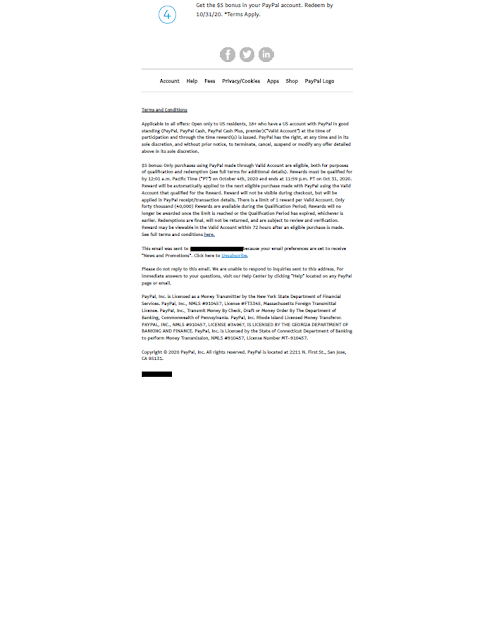A couple weeks ago I wrote about an email from PayPal selling Honey without communicating a value proposition. Over the weekend, I received this email:
PayPal explains Honey in one sentence, "Install Honey in just two clicks so when you shop online you can automatically get some of the best prices from over 30,000 online retailers." That is a well-worded product value proposition.
Where the prior email encouraged immediacy but lacked a value proposition, this email includes a value proposition does did not encourage immediacy in the call to action. As I draft this post, the $5 bonus offer appears to still be active. Perhaps they have not reached the limit of 40,000 new customers eligible for the offer they mentioned in their first email.
Here's an idea: Combine the value proposition and encourage immediacy in a single communication by explaining the product then closing with a $5 bonus offer. The email could be summed up in a few sentences:
"Install Honey in just two clicks so when you shop online you can automatically get some of the best prices from over 30,000 online retailers. Hurry -- the first 40,000 people to install Honey and make a purchase of $10 or more will receive a $5 bonus."
Will you get that $5 bonus in addition to shopping online with Honey? I don't know, but you should make sure your email isn't a Fail. Act now!
Lesson:
Communicating a value proposition is important, but so is giving the customer a reason to take action now.


